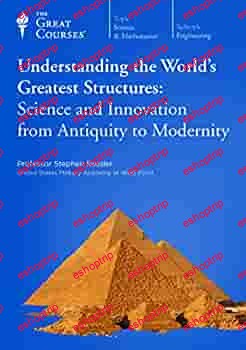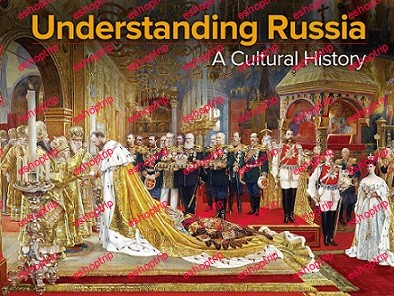TTC Video Understanding the World’s Greatest Structures
9.23 GB
Your world is filled with structures that have stood the test of time. That give character to the cities and landscapes in which they’re located. That are visited by millions of people each year. And that capture our wonder for the marvels of engineering innovation and progress. But while structures such as the Giza pyramids, Brunelleschi’s dome, and the Brooklyn Bridge are visual spectacles in and of themselves, they are just as important for the way they were designed as for the way they look.
Now, experience the engineering genius that makes these works possible with Understanding the World’s Greatest Structures: Science and Innovation from Antiquity to Modernity—a marvelous learning experience that takes you around the world and reveals the stories behind the most famous structures from thousands of years of history. Delivered by award-winning Professor Stephen Ressler of the United States Military Academy at West Point, a civil engineer and a nationally honored leader in engineering education, these 24 lectures take you on a fascinating and richly illustrated tour that deftly blends history and science to create an unforgettable survey of our world’s most remarkable structural masterpieces.
Embark on a Whirlwind Tour of Great Structures
You spend the first few lectures delving into the scientific principles that govern six basic types of structural elements; the building blocks that compose nearly all of the world’s structures, from arches to columns to cables.
Once you’ve mastered how these and other elements work, you embark on a whirlwind tour of more than 150 great structures that takes you from the deserts of ancient Egypt to the skyscraper race of early 20th-century New York to the inventiveness of postmodern architecture. You’ll learn new insights into some of civilization’s most impressive buildings, bridges, and towers.
- Parthenon: While known for its perfect proportions and architectural refinements, the Parthenon is actually a rather unsophisticated structural design—especially in its use of interior colonnades to support the roof.
- Eiffel Tower: The Eiffel Tower is composed of iron bars arranged in interconnected triangles called trusses that can reach great heights with many small elements and allow for versatility of form.
- Brooklyn Bridge: The four main cables of this suspension bridge are central to its ability to span the East River in New York City. Each of these cables is built up from over 5,000 steel wires.
Understanding the World’s Greatest Structures also considers structures that, while perhaps less familiar or more recent, are just as important to fully grasping the intricacy of structural engineering. These include Switzerland’s Salginatobel Bridge and the Burj Khalifa in Dubai.
Learn from Educational Expertise and Dynamic 3-D Models
Professor Ressler’s work and his dedication to engineering education have won him numerous national awards, including the American Society of Civil Engineers’ Outstanding Projects and Leaders Award—the organization’s highest honor. He brings this same award-winning knowledge and dedication to every lecture of Understanding the World’s Greatest Structures. Couple this with the stunning 3-D animations that re-create and allow you to take apart individual pieces of great structures, and you have an engaging learning experience that will change the way you think about the buildings around you.











Reviews
There are no reviews yet.